Menu
You can manage your membership and billing method by clicking here
Terms of Service
Privacy Policy
Copyright © 2025 Office of Immigration Australia, a private company registered in Australia. All Rights Reserved.

Checking membership status...
 EXCLUSIVE MEMBERS ONLY ACCESS
EXCLUSIVE MEMBERS ONLY ACCESSTo access this month’s edition & Member’s only resources, enter your registered email address.



Exclusive Australian Immigration News, Updates & Opportunities
September 2023
This bulletin is for members only, and provides our members with month to month updates on Australian immigration policy changes and consequential opportunities. Opportunities are found via federal and state government policy shifts for the demand and supply for certain occupations.
This bulletin will keep you up to date so that you do not have to employ expensive immigration lawyers to provide you with monthly research.
September 2023 has arrived and the best time to apply for Australia immigration is now!
The Australian Government has recently taken swift policy actions to drive record numbers of migrants with the goal to build a strong pipeline of talent here in Australia!
A department spokesperson stressed that the government continues to recognise the important role skilled migrants are playing in nation building, cultural diversity, social cohesion and economic growth!
The Australian government has also recently announced several measures to benefit new immigrants and announced a significant reduction in average visa processing times!
So if you haven’t already, now is the time to get your visa application ‘decision-ready’, which will help the department process your application even faster! By seizing this opportunity, you can open the door to a fulfilling and prosperous future in the Land Down Under!
In this month’s ‘Federal News‘, as Australian multiculturalism is still regarded as Australia’s greatest achievement, the Australian Government now looks to launch a Multicultural Framework Review to help shape future policy. This comprehensive review seeks to enhance social cohesion and inclusivity.
Also in this month’s federal news, big changes are soon coming to Australia’s immigration system and we discuss what some of these proposed changes look like!
In this month’s ‘State News’, skilled workers residing offshore remain eligible to be considered for ALL State and Territory nominations! Please view the State Migration Section of this month’s bulletin for all State and Territory program updates and opportunities available!
In this month’s ‘Economic News’, a migration reset is now seen as a possible game changer, as the Business Council’s chief executive Jennifer Westacott said that “a shift to a simpler and more streamlined migration system with better pathways to permanency is a crucial step to securing Australia’s future prosperity.”
Also in this month’s economic news, we take a look at some of the most popular cities for expats to move to in Australia!
In this month’s ‘Student News’, a LinkedIn post published by the Department of Home Affairs has revealed that Australian student visa processing times just got a whole lot shorter, with the average Student (subclass 500) visa being processed within 16 days!
Also in this month’s student news we discuss how to best find jobs for international students in Sydney!
All this and much more in the September issue of The Australian Immigration Bulletin! Let’s take a deeper look at what has happened so far and what is planned for the remainder of September 2023 in Australian Immigration, so that you can start planning!
In case you missed it…
We are excited to announce a new benefit now available which allows all our member’s FREE access to an online platform and course to practice, study and improve their English and IELTS score. The IELTS exam is one of the key recommended exams you will need to take in order to Apply for Skilled Migration to Australia and the better your results, the higher points you will get when submitting an expression of interest. The advanced English and IELTS platform will allow all members to practice Mock IELTS Exams, learn cutting edge tips and gain a greater understanding of how to achieve a Band 9+.
We are also excited to announce “ImmiConnect” which is now available in the member’s area. ImmiConnect is the Office of Immigration Australia’s Employer Sponsored program which allows overseas workers to receive job interview invitations from Australian employers, when job opportunities come available.
The program aims to bring globally mobile, highly-skilled and specialised individuals to Australia who can fill critical areas of need.
ImmiConnect is exclusive to active Australian Immigration Bulletin Members only. You must be a current Australian Immigration Bulletin Member to be eligible to receive job interview invitations.
So if you are interested in receiving these invitations, please sign up for FREE by Clicking “ImmiConnect” and adding your name and email address.

*2 WINNERS DRAWN EVERY MONTH:
Current round: April 2023 – August 2023 (10 winners/prizes in total)
Next round: September 2023 – January 2024 (10 winners/prizes in total)
There is always a winner, and the next one could be you!
The winners of the August 2023 Immigration Prize Giveaway were drawn at 10am AEST on 1st September 2023.

Congratulations to the August 2023 winners! You have been sent a confirmation email with details on how to claim your prize!
The next 2 lucky winners will be drawn at 10am AEST on 1st October 2023.
As of 6th July 2022, people entering Australia do NOT need to provide evidence of Covid-19 vaccination status. Additionally, people leaving Australia will NOT be asked to provide evidence of their vaccination status. Unvaccinated visa holders do NOT need a travel exemption to travel to Australia. It is however important to remember that airlines, vessel operators and other countries may have specific requirements that travellers need to comply with.
Please see the list of vaccines that are recognised by the Australian government for travel purposes here.
Spain wins historic ‘FIFA Women’s World Cup final’ 1-0 against England! Stadium Australia, Sydney, NSW. August 2023……. Read more
This Bulletin and its contents is for general information purposes only and should not be used as a substitute for consultation with professional advisors.
As legislation and travel requirements are constantly changing, we strongly recommend obtaining advice on your individual situation from a Registered Migration Agent.
Please click here to book a consultation with one of our Registered Australian Migration Agents, located in Australia.
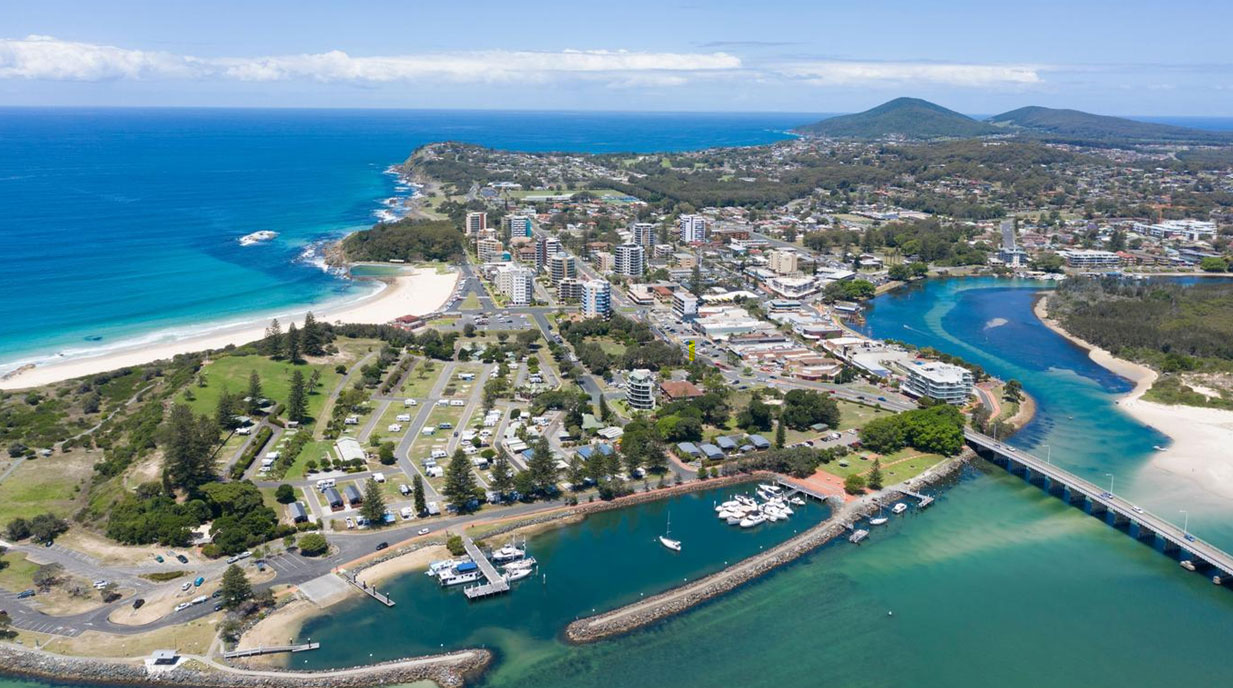
Forster, New South Wales
The Results of the August 2021 census were made public on 12th July 2022, and revealed that Australia has become a majority migrant nation, as the census data shows for the first time that more than 50 per cent of residents were born overseas or have an immigrant parent. Last year’s census counted nearly 25.5 million people, including 1 million new residents.
Australia’s 2023-24 Migration Program has been carefully designed to boost the social and economic outcomes that meet Australia’s needs. In fact, the migration programme was first launched in 1945 following the aftermath of World War 2. Given this long history, it is worth understanding how it works. The Australian Immigration Bulletin exists to help explain this in more detail.
As we’ve entered the 9th month of the year, join us for a look at the latest news and developments in the world of Australian Immigration!
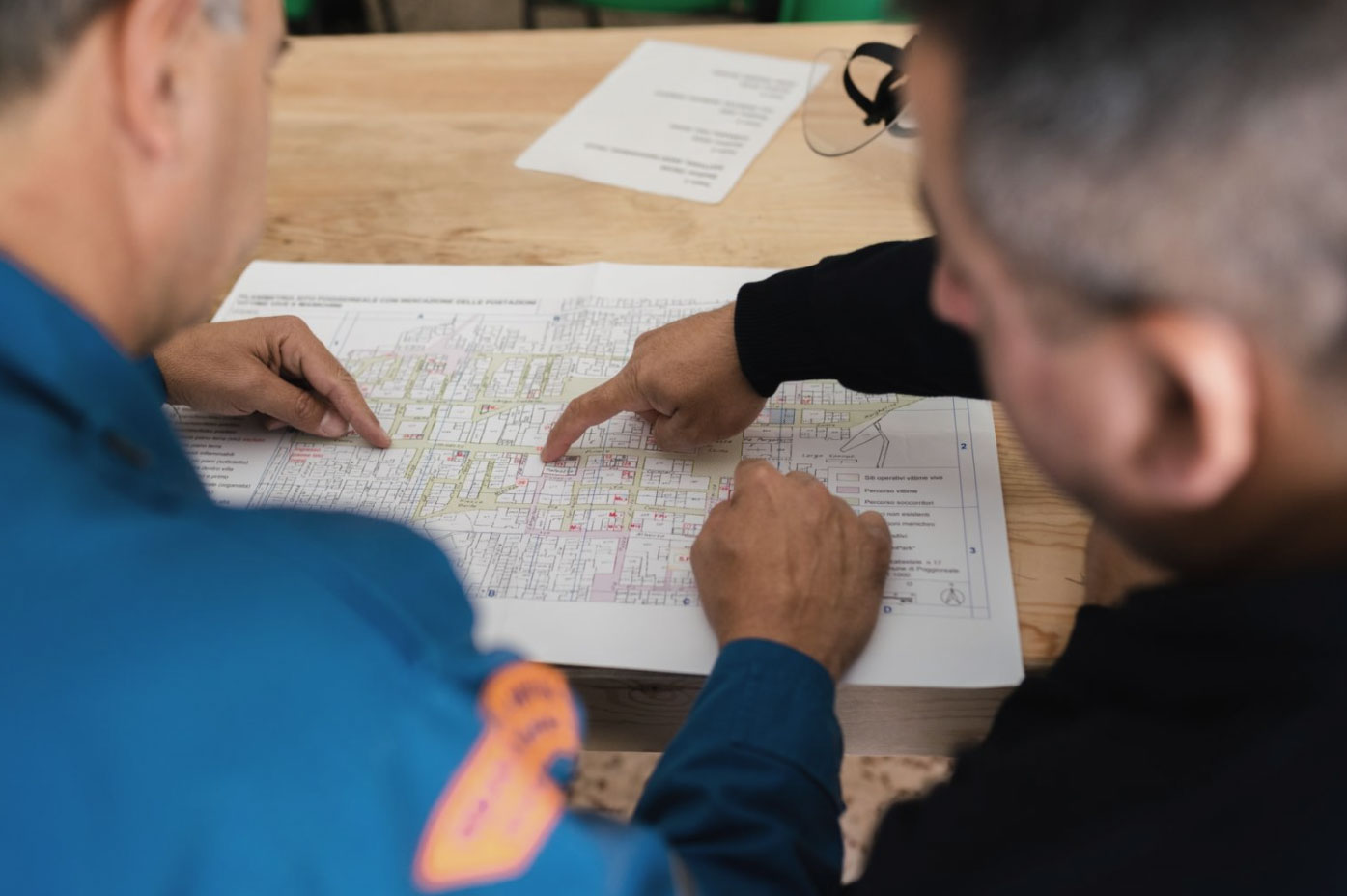
We spoke with Van, a skilled migrant and civil engineer currently working for a private company in Australia.
What can a migrant do to be competitive in Australia?
There are a few things a skilled migrant can do to be competitive in Australia in general.
The most important thing is to improve English (although it might sound obvious as we live in an English speaking country). The second thing is that you have to be immersed in the Australian culture. The ways of work might be different and you have to adapt to that and learn how to work in a team.
Then you have to adapt to the work environment. Humility is the most important thing.
What could be a solution for migrants with no Australian experience?
Well many companies like to also hire people through referral programs.
Usually, the Australian companies have an internal referral program, where a new candidate is referred by an existing employee. If a migrant is finding it difficult to find work, then my advice in this situation is to try to take up some volunteering work. That way you can immerse yourself in Australian working culture and get some experience. Even if this experience is not directly relevant to your profession, you can improve some of the soft skills like communication, working in the team, case management, or project management. Those can be stepping stones on your way to getting a dream job.
Could you please talk a little bit about the recruitment process based on your experience?
My second job was with my local government department. I found this position in the graduate program section of the JumpStart website and applied for it. Usually, to apply for a job in the public sector, you need to complete the Selection Criteria. The government would assess your responses and if you satisfy all the requirements, they will invite you for the interview. During the interview, you can be asked similar questions to those in the Selection Criteria.
What challenges did you face as a migrant working in a new country? What are some of the things migrants can do to adapt to these challenges?
I hadn’t known much English before I came to Australia, that was my biggest challenge. The second one was culture. Coming from an Asian country, I had to adapt to Western culture.
The best thing to do is to create your network, be present on LinkedIn, a dimension where you actually can try to reach local communities seeking opportunities. After doing some volunteering and entry-level jobs, you will have a chance to finally get to your dream job, and prove yourself to be successful working in Australia.
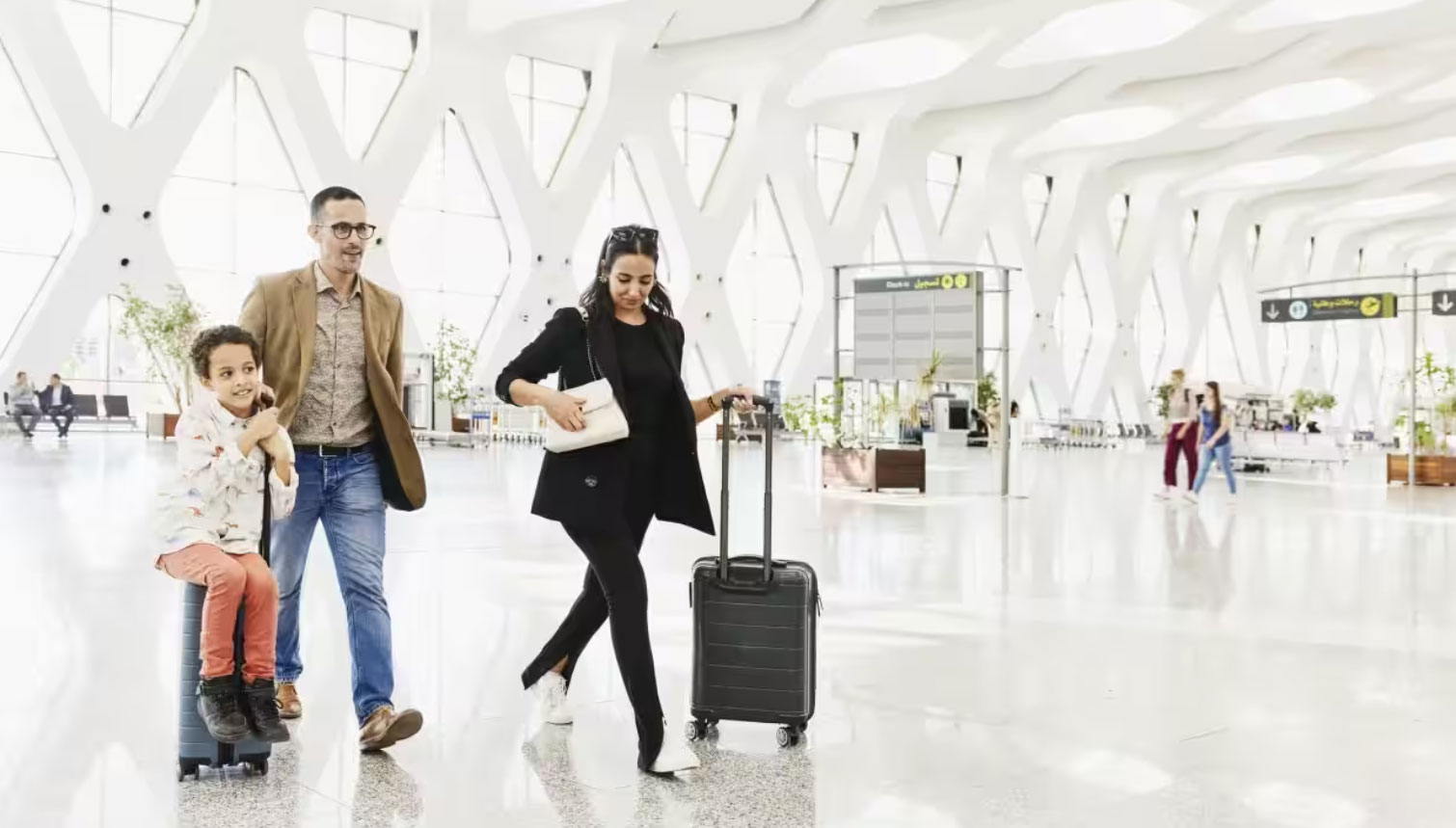
Recently, the Australian government has announced several measures to benefit new immigrants and international students in Australia.
Australia has long been a popular destination for people seeking better opportunities and a high standard of living in an advanced country. With its strong economy, diverse culture, spectacular landscapes, and tremendous quality of life, Australia offers several advantages for immigrants. However, there are several reasons why now is the best time to consider applying for Australia Immigration. In this article, we will discover the key factors that make this period apt for those aspiring to make Australia their new home.
Key Australia Immigration Changes
Recently, the Australian government has announced several measures to benefit new immigrants and international students in Australia. Here are a few of these measures:
Key changes applicable from 1 July
Find below key Australian immigration changes applicable from 1 July 2023:
Applying for immigration to Australia has always been an intriguing choice for individuals seeking better opportunities and a higher quality of life. However, the aforementioned changes and measures make it an exceptionally valuable time to embark on this journey.
Apply for immigration to Australia now!
The demand for skilled professionals, streamlined immigration processes, successful pandemic management, economic recovery, family-friendly policies, and exceptional quality of life in Australia are all compelling reasons to consider making a move. By seizing this opportunity, you can open the door to a fulfilling and prosperous future in the Land Down Under.
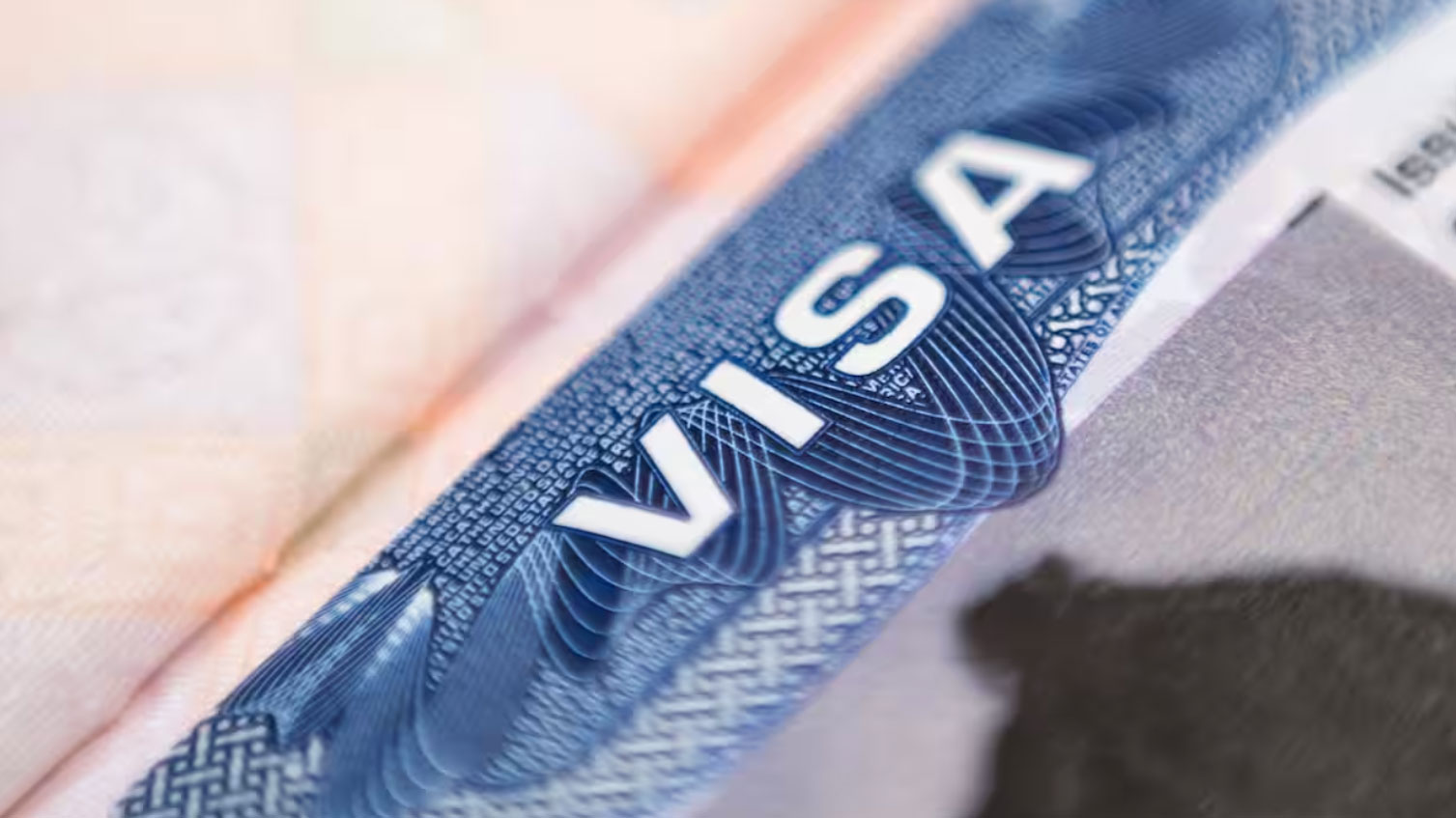
The Australian Department of Home Affairs recently announced a significant reduction in average visa processing times.
The Department recruited almost 600 new staff members between 1 July 2022 and 30 June 2023 who now support faster migration visa processing.
If your visa application is ‘decision-ready’, then it will help the department process your application even faster. Applicants should always doublecheck all the information and documents before lodging their applications. Insufficient documentation may result in delays or potentially even visa refusals if applicants neglect to submit the required documents. If the applications are accurate and accompanied by all necessary documents, there should be no unnecessary delays in the visa processing.
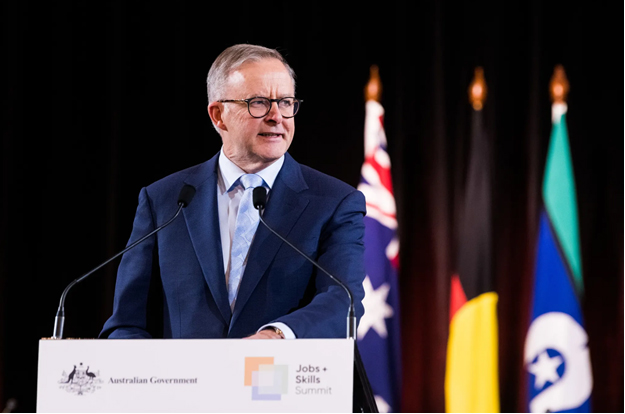
The Australian Government has taken swift policy actions to drive record numbers of migrants into Australia! These actions include:
On Monday 14th August the truth was revealed with the Department of Home Affairs finalising nearly 8.3 million visas in the 2022-23 financial year – a 190% increase on the 2021-22 fiscal year:
The Department said that almost 600 new staff members were recruited between 1 July 2022 and 30 June 2023 who now support temporary and migration visa processing.
A department spokesperson stressed that the government recognised the important role skilled migrants were playing in nation building, cultural diversity, social cohesion and economic growth.
“On 27 October 2022, the Minister for Home Affairs and Minister for Cyber Security, Clare O’Neil, signed a new Ministerial Direction (MD 100). MD 100 reduces the number of visa processing priorities, which has increased efficiencies and assisted in reducing processing times across all caseloads”, the spokesperson added.
Applicants are now getting visa grants faster than ever before.
As of May 2023, the number of international students enrolled in Australian courses reached 608,942.
The Albanese Government’s swift actions have lifted net visa arrivals to record levels.
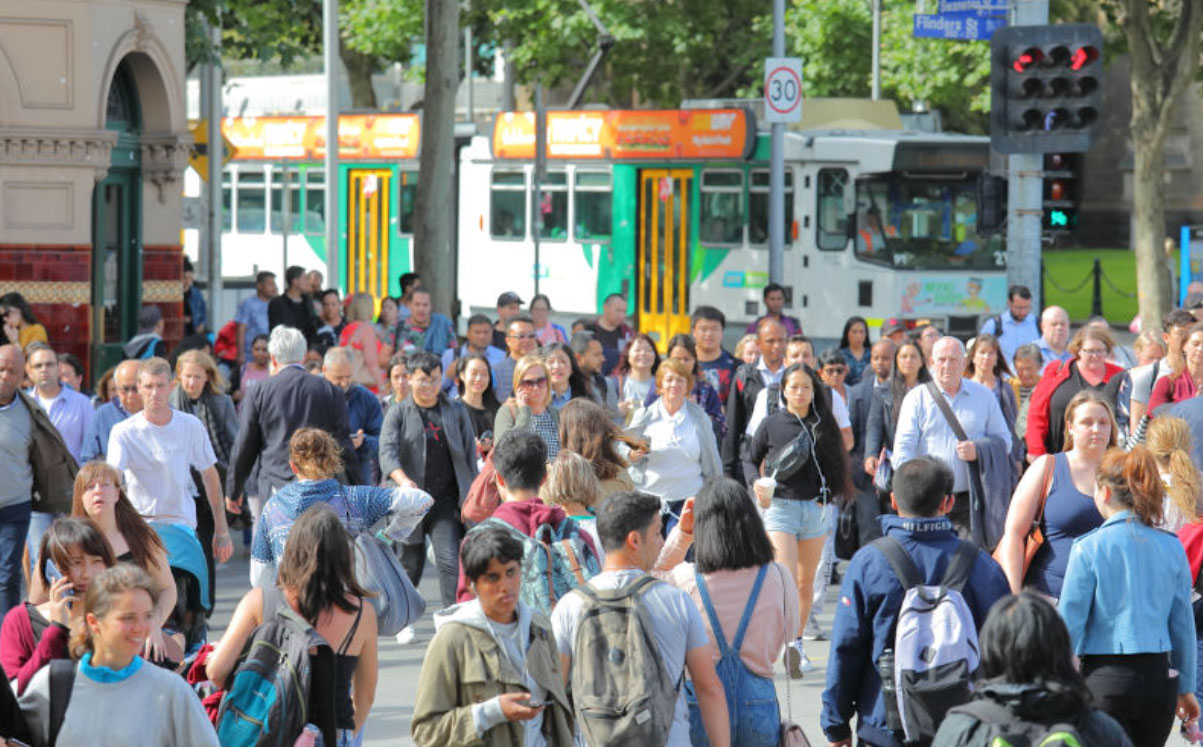
In a broad sense ‘Australian multiculturalism’ describes the cultural and ethnic diversity of Australia. Over a half of Australians were born overseas or have at least one parent born overseas.
More specifically, ‘Australian multiculturalism’ as a public policy enunciated by governments attempts to manage the consequences of that diversity. It acknowledges the right of all Australians ‘first, to cultural identity; the right within limits to express their cultural heritage in such areas as religion and language; secondly, to social justice, the right to equality of treatment and opportunity, regardless of race, language, religion and gender; and finally, to economic efficiency, the need to maintain and develop the diverse skills and talents of all Australians.’
Australian multiculturalism also importantly insists that with the rights of newcomers, go certain obligations. ‘First, there must be an over-riding and unifying commitment to Australia and its future. Secondly, there must be acceptance by all of the basic principles and structures of Australian society – the Constitution, Rule of Law, Parliamentary democracy, freedom of speech and religion, English as the national language and tolerance and equality.’ A superstructure of diversity can only be securely built on a common and secure sub-structure.
New settlers have a strong commitment to succeed and have made outstanding contributions to Australia. They are invariably industrious, entrepreneurial and risk-taking.
Australian culture, society and institutions are dynamic. The new changes to accommodate to the old; newcomers change in adjusting to their new situation. The old also changes to accommodate the new; Australian society of today is different to that of yesterday. It is a two-way process, each adjusting to the other.
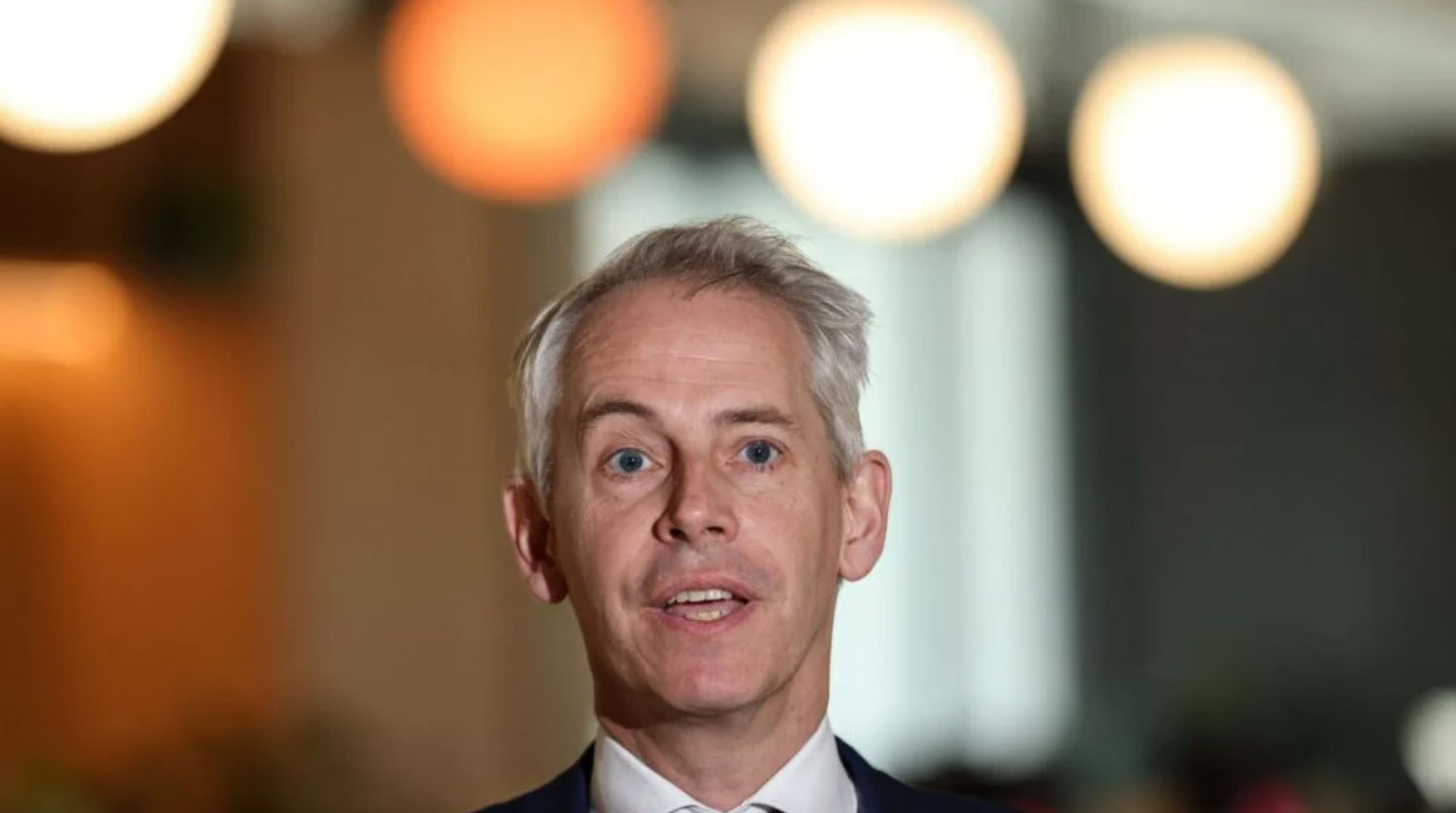
The comprehensive assessment seeks to enhance social cohesion and inclusivity.
The Minister for Immigration, Citizenship and Multicultural Affairs, Andrew Giles today in an online multicultural media conference launched the government’s Multicultural Framework Review.
The Review coincides with the 50th anniversary of the Whitlam Government’s 1973 report, ‘A Multi-cultural Society for the Future’ that marked the delivery of multicultural policy for Australia.
The minister said that since the launch of multiculturalism by the Whitlam government there has not been a grassroots and extensive review of the policy.
It is about listening to old and new communities
The Review will assess the institutional structures and policy frameworks at the national level, to boost multicultural Australia, and augment “social cohesion and harmony.”
He added that a review of multiculturalism wants to ensure “that the capabilities of every Australian citizen are nurtured.”
He added that any review to date has tended to be a “top-down” process and this aims to be a more inclusive and open process for all.
“Multiculturalism has been instrumental to Australia’s success since it was launched by Gough Whitlam’s government and will continue to be one of the key forces shaping our nation.
“We want to ensure that we have the right policies and institutions to meet the needs of our increasingly diverse society,” Giles said.
Giles said that the Albanese Government is calling on “all Australians to submit their views, in writing, in audio or video” and the language of their choice. The call for the Review has been translated in “35 key languages” said the minister, as has all the information on the Review.
“We are about by engaging with community and listening, to established and newly arrived culturally and linguistically diverse communities,” Giles said.
Neos Kosmos raised the issue of ensuring that multicultural media be also invited to all pressers by politicians, not just multicultural ones.
Giles noted that and affirmed that he would seek to make his colleagues and their press officers aware.
Neos Kosmos questioned the rationale behind translating promotional materials, considering poor translations of the past, especially during the Covid19 pandemic, and the fact that multicultural media possess proficient English-speaking skills, enabling them to translate content in a manner that resonates effectively with their audiences.
The minister said that he understood that “translations on their own will not do the job.”
“Speaking to people in their terms is essential and we do not doubt the important role that you [multicultural media] play.
“It is important though to ensure that translated materials are accurate and comprehensible to all however, it is also a sign of respect to our diverse communities,” Giles said.
He added that he felt media reports on the review, and independent translations were “complementary not contradictory.”
“We want to hear from a range of voices sharing their lived experiences, their views on what is working well, and what could be improved to advance a multicultural Australia.
“The Government has prioritised accessibility to a variety of languages and cultural groups so that everyone, no matter what language they speak, can have their say,” Giles said.
Open for submissions – any way you like
The Department of Home Affairs accepts submissions in all languages, including audio and video options on the Review website.
Neos Kosmos questioned how video and audio submissions would work. The minister said that the research he has revealed that younger people especially in newly arrived communities “preferred to work with video and audio.”
“We know from the research that younger people, especially in new and emerging communities prefer to communicate with video and audio, and all they need to do is upload a video or audio file to the website.”
Dr. Hass Dellal AM, the head of the Australian Multicultural Foundation and former chair of SBS, has been entrusted with “physically engaging with the community and meeting peak government and advocacy bodies.”
The minister said that the review is about redefining and re-examining what multiculturalism is about and how government policies best serve all Australians.
He listed some of the key issues impacting multicultural communities, such as “age care, whether it’s at home or in institutions, is for the older communities,” job markets, and entrepreneurial skills, as well as settlement services for newly arrived communities.
Minister Giles wants to also “identify the questions that are not being asked by the government.”
“I want to open up to big questions, about how it feels like to be living in a country like Australia as a member of a culturally and linguistically diverse multicultural community,” Giles said.
“I want all Australians of culturally and linguistically diverse backgrounds to feel confident about who they are, and to change according to their own pace.”
Multicultural communities and the First Nations Voice to parliament
Neos Kosmos asked about what the minister felt about those promoting the No to First Nations Voice to parliament, like Warren Mundine and Senator Jacinta Nampijinpa Price courting multicultural communities.
“I would never speak on behalf of the diversity that is multicultural Australia, as some on the No side, seem to attempt, I want to hear all voices… all the different voices,” Giles said.
The minister went on to talk about an event he attended an event Springvale, (Melbourne) organised by multicultural communities in support of the Yes position and said, “It looked like Australia.”
“Hundreds of people were there who were in support of recognising First Nations people in the constitution.
“Support for the Voice is particularly strong among new arrivals whose experiences align to many of those of First Nations, as the timing for their migration journey is more recent.”
He acknowledged that “maybe older communities may have a more distant relationship with First Nations people.”
“My role is to engage with all. To listen to different perspectives. That is how good policy is developed and the Voice is about listening to a diversity of views.”
Giles said that he will be engaging with communities “across Australia in capital cities and regional centers.” The final report will be delivered to the government in the new year.
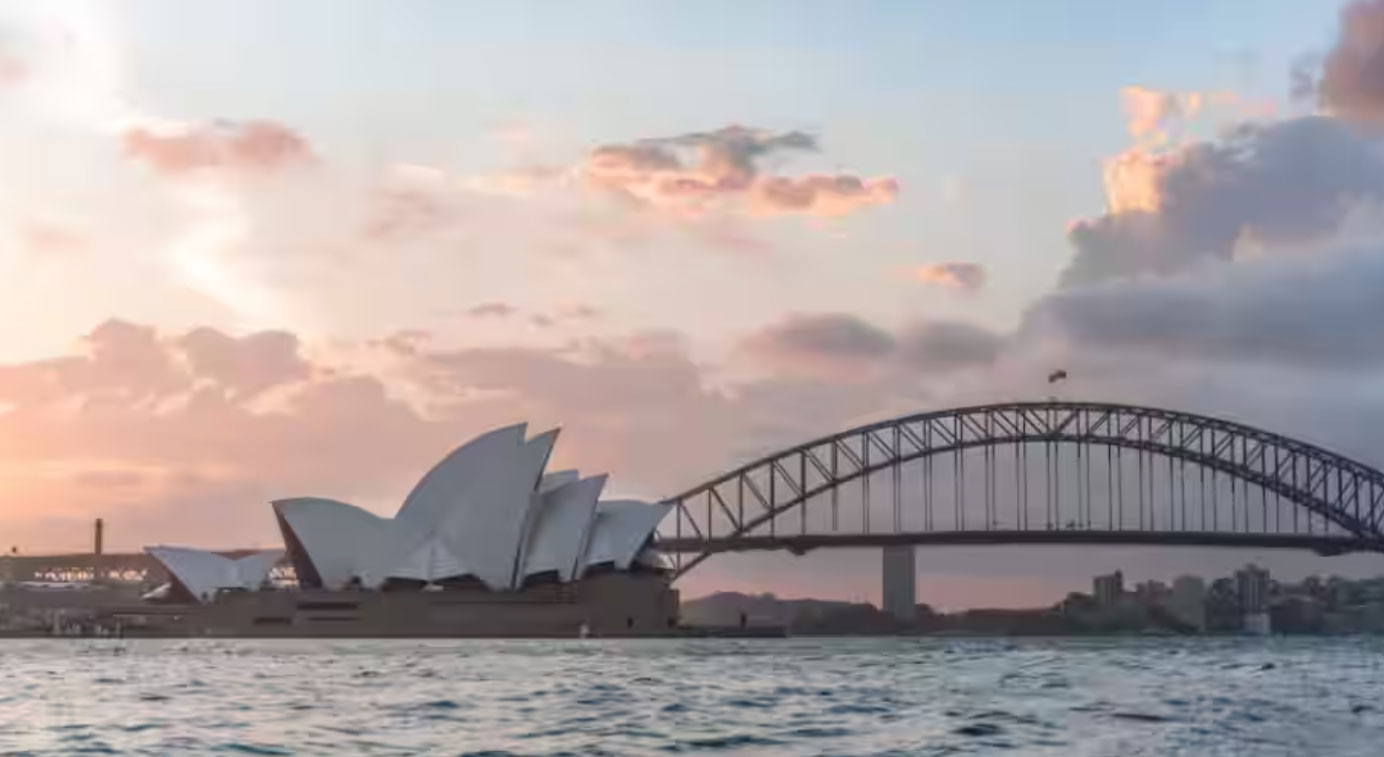
It is good news for all those who are planning to move to Australia for work, as the country is set to make significant changes in its immigration system.
The proposed major overhauling of the system is done with the aim to speed up the entry of highly skilled workers into the country. It will also focus on streamlining the process of permanent residency.
Some proposed changes to the new immigration system:
In September, Australia raised its intake of permanent migrants as businesses faced staff shortages. From July 1, the government even said that it would raise the migrant wage threshold of temporary skilled workers to A$ 70,000 from A$ 53,900. This was the first big change in wages since 2013.
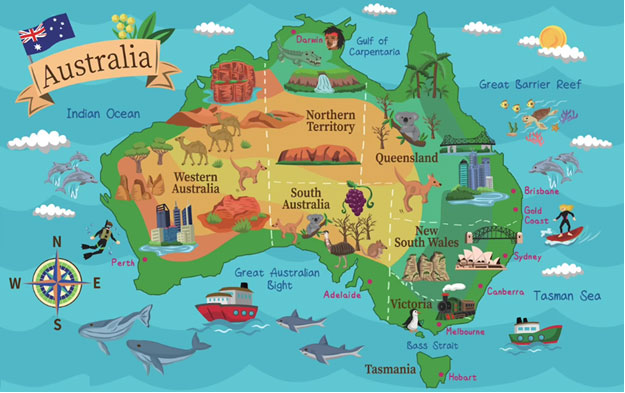
If you are interested in applying for a general skilled migration visa to Australia, it is important to have a good understanding of the skilled visa options and how the migration points test works, so that you can maximise your chances of being eligible to apply for a skilled visa.
A general skilled migration visa is an option available to skilled workers who are seeking to qualify for a skilled visa independently, or under a state or family sponsorship. It is an alternative to an employer sponsored visa.
One of the key criteria to qualify for a general skilled migration visa is the points test (a criterion that does not apply to employer sponsored visas). This is often the most challenging aspect for prospective skilled visa applicants to overcome when seeking an invitation to apply for the relevant skilled visa.
If you are considering applying for a general skilled migration program visa, an important concept to understand is the Expression Of Interest (EOI).
If you are considering applying for a general skilled migration visa, it is important to be aware that for certain visas in this visa class, you will first be required to lodge an EOI with the Department of Home Affairs (the Department) through Skill Select. The EOI is not a visa application, but rather, it is the process by which you can express your interest in applying for the relevant skilled visa (It’s important to note, that there is NO fee to submit an EOI).
This requirement applies to the following skilled visa subclasses:
Let’s take a brief look at each of these visas below:
The ‘subclass 189’ is a federal sponsored visa that grants automatic permanent residence in Australia. It is subject to nil visa conditions or obligations. For this reason, it is often considered to be the most flexible of the skilled visa options available.
A subclass 189 points-based visa allows you to live and work in any state or territory permanently.
The ‘subclass 190’ is a state/ territory sponsored permanent residence visa. It is another points-based visa for which invitations are issued throughout each month by individual states and territories. One of the benefits of applying for state nomination is that you will be granted an additional 5 points.
An important aspect to consider, which does not apply to the subclass 189 visa is that there is an added step in the application process. In this case, you must also apply for nomination approval to a state or territory government. Only upon receipt of an invitation from the relevant state or territory to which you apply can you then apply to the Department for the visa itself.
Your obligations as a subclass 190 visa holder are that you must commit to your nominating jurisdiction’s obligations and commit to residing in your nominating State or Territory for two years from visa grant.
The ‘subclass 491’ is also a points-based state/ territory (or family) sponsored visa. It is a regional visa with a term of five years. The Department issues invitations for family sponsored EOI applications only (in invitation rounds). Invitations for state sponsorship are issued by individual states and territories throughout each month. This will grant you an additional 15 points for the nomination.
Being a provisional visa, this means it provides a pathway to permanent residence in Australia with the Subclass 191 Permanent Residence (Skilled Regional) visa, subject to meeting specified requirements.
Be mindful that as a subclass 491 visa holder, you must abide by visa condition 8579, which requires you to live, work and study in a designated regional area of Australia. For migration purposes, most locations of Australia outside of major cities (Sydney, Melbourne, Brisbane, Perth, etc.) are classed as regional areas.
If your EOI is successful, you will receive an invitation to apply for the visa, as specified in the invitation letter. This then enables you to proceed with lodgment of your visa application (provided you meet all other visa lodgment and visa grant requirements).
Please note, the below State and Territory program updates is a general overview only. It does not take into account any of your personal circumstances. You must check the State/Territory information carefully to ensure you can meet all the requirements for nomination.
Australia is currently facing a shortage of skilled migrants to fill workforce demands. In response, states and territories have been easing the conditions of their visa programs to help attract skilled workers from overseas.
Below is the monthly update for some of the State and Territory opportunities available.
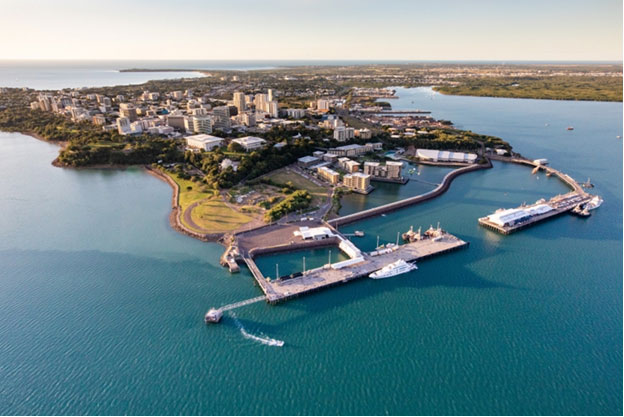
Program Status Update
People residing offshore are now eligible to be considered for Northern Territory (NT) nomination. Invitations to apply for Northern Territory nomination will be via the ranking system.
The ‘Northern Territory Offshore Migration Occupation List’ identifies the occupations in current demand in the Northern Territory. This List is important if you want to apply for Northern Territory nomination for either a:
The ‘Northern Territory Offshore Migration Occupation List’ is only applicable for those applying for NT nomination from outside Australia, under the Priority Occupation stream.
Please note: The Northern Territory government has advised that offshore applicants will generally only be offered a Northern Territory nomination for a subclass 491 visa. Subclass 190 nominations will only be offered in exceptional circumstances, such as cases where the applicant has strong connections to the NT.
The NT advises eligible applicants to apply as soon as they meet the eligibility criteria. To receive a nomination from the NT Government, you must:
Before submitting an EOI for The Northern Territory, applicants should check that they meet all eligibility requirements.
For a further explanation, see the Frequently Asked Questions page on the Northern Territory Government website.
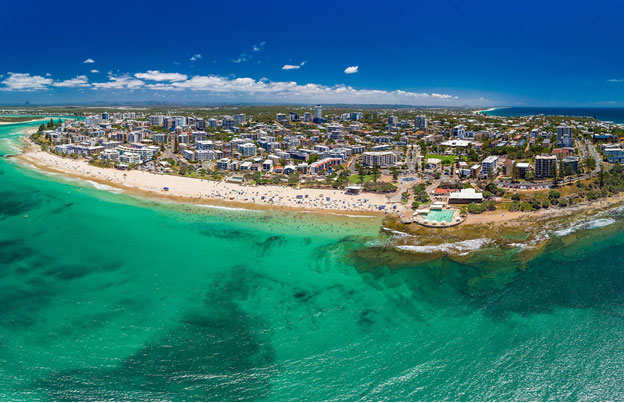
Program Status Update
To manage Queensland’s COVID recovery response, applicants currently residing offshore are now able to apply.
Depending on your occupation and situation, there are two state nomination options available for skilled migrants through Queensland.
For Queensland state nomination, prospective applicants must meet the Department of Home Affairs requirements, state-specific occupation requirements and have skills in an occupation that is available on the Queensland Skilled Occupation List.
You may undertake employment once onshore in Queensland through:
Offshore applicants meeting the minimum published requirements are eligible to lodge an Expression of Interest (EOI).
Migration Queensland criteria requires you to:
The agency also requests all applicants to ensure they have carefully read and understood the new criteria relevant to their stream or pathway, and that they meet the criteria before submitting an Expression of Interest (EOI).
The 2023-24 Skilled Migration Program will be open to both onshore and offshore applicants and provide pathways for skilled workers, graduates, and small business owners.
Before submitting an EOI for Queensland, applicants should check that they meet all eligibility requirements.
For a further explanation, see the Frequently Asked Questions page on the Queensland Government website.

Program Status Update
Open to offshore applicants, the program provides skilled migrants with a pathway to permanent residency in Victoria. The skills that successful applicants bring to Victoria benefits employers and the broader Victorian economy.
The program provides two visa pathways:
As with previous years, applicants will first need to submit a Registration of Interest (ROI) and then be selected on competitive merit to apply for visa nomination.
Both onshore and offshore applicants are eligible to submit a Registration of Interest (ROI) for both the subclass 190 and subclass 491 visas.
This is a significant change from the 2021-22 Skilled Migration Program, which did not allow applications from individuals overseas. Additionally, the new program is a great opportunity for applicants who work in a variety of occupations, particularly since the 2021-22 program was previously aimed at applicants in science, technology, engineering, mathematics and medicine (STEMM).
If you submitted a ROI during the 2021-22 program, you must submit a new ROI to be selected to apply for the 2022-23 program.
Your ROI will remain in the system for selection until it is withdrawn, selected or the program year ends.
Before submitting an ROI for Victoria, applicants should check that they meet all eligibility requirements.
For a further explanation, see the Frequently Asked Questions page on the Victoria Government website.
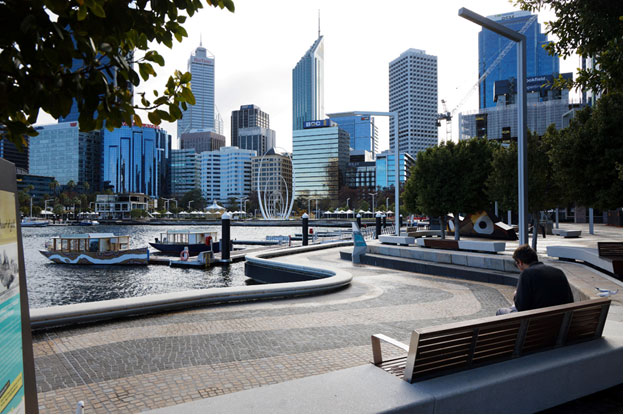
Program Status Update
People residing offshore are eligible to be considered for Western Australia (WA) State nomination. Invitations to apply for WA State nomination will be via the ranking system.
The Western Australian Skilled Migration Occupation List identifies the occupations in current demand in Western Australia. This List is important if you want to apply for Western Australia nomination for either a:
Please note that to be eligible for an invitation in the WA State Nominated Migration Program, you must meet both:
Before starting your application, you will need to check whether your occupation is available on either the WA Skilled migration occupation list (WASMOL) Schedule 1 or 2, or the Graduate occupation list. You can search for your occupation here. (The occupation list search bar is located under the heading ‘Eligible Occupations’.)
For the 2022-2023 program, the WA Government is temporarily waiving the $200 application fee. Additionally, applicants who apply after this date will no longer need to provide proof of sufficient funds for WA State nomination.
Under the Western Australia Skilled Migration Program 2022-23, the English language requirement has also been reduced for applicants at the Manager and Professional occupation level. Applicants at this level will only need to demonstrate a “competent” proficiency in English (which is a minimum ‘IELTS score of 6’ for each of the 4 categories).
Before submitting an EOI for Western Australia, applicants should check that they meet all eligibility requirements.
For a further explanation, see the Frequently Asked Questions page on the Western Australia Government website.
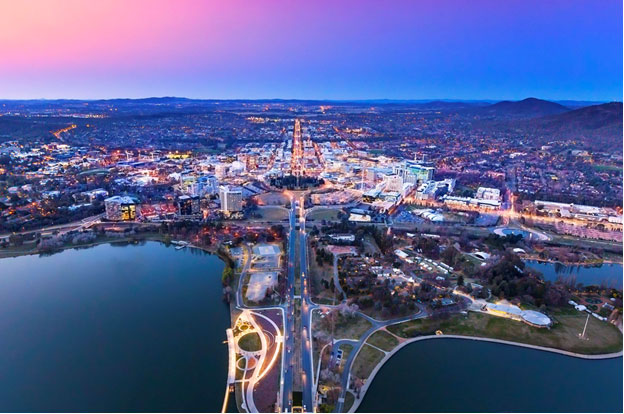
Program Status Update
The ACT Critical Skills List identifies the occupations in current demand in the ACT. This List is important if you want to apply for ACT nomination for either a:
The ACT Government will update this list every four months to make sure that the ACT Skilled Migration Program adapts and responds to the evolving critical skills needs of the ACT economy.
The Canberra Matrix is weighted to ensure that applicants who will make a positive economic contribution to the Territory and/or have demonstrated a genuine commitment to the ACT are more likely to be ranked and invited to apply for ACT nomination.
*ACT nomination does not guarantee a migration outcome. You must still meet the Department of Home Affairs criteria.
Every month, a certain number of nomination invitations are available (prorated on the annual allocation) to those working in the highest ranked Matrix in each occupation.
You can view the ACT’s most in-demand skills for skilled migration by consulting the ACT Critical Skills List.
Before submitting an EOI for The Australian Capital Territory, applicants should check that they meet all eligibility requirements.
Once you’ve submitted a valid Department of Home Affairs Skill Select EOI, follow the ACT Government Process to apply for ACT nomination.
For a further explanation, see the Resources page on the ACT Government website.

Program Status Update
To manage South Australia’s COVID recovery response, applicants currently residing offshore are able to apply.
Depending on your occupation and situation, there are two state nomination options available for skilled migrants through South Australia.
For South Australian state nomination, prospective applicants must meet the Department of Home Affairs requirements, state-specific occupation requirements and have skills in an occupation that is available on the South Australian Skilled Occupation List. Offshore applicants meeting the minimum published requirements can now lodge an Expression of Interest (EOI).
There is an enormous range of occupations on South Australia’s Skilled Migration Occupation List in a range of industries – search for your occupation here.
South Australia will increase its nominations of offshore skilled migrants in 2022-23. This is in order to make entry to the South Australian labor market faster, due to urgent skills shortages.
To do this, South Australia will select offshore applicants to apply for state nomination from those who have submitted an Expression of Interest (EOI) through Skill Select. Offshore applicants will not need to lodge a Registration of Interest (ROI) for this year’s program. South Australia will be nominating offshore applicants from over 470 occupations on South Australia’s Skilled Migration Occupation List. To be eligible, ensure all the information in your Skill Select EOI is up to date and you have selected South Australia as your first preferred state or territory to move to in Australia.
South Australia will be assessing candidates on merit by the following factors, within their nominated occupation:
Before submitting an EOI for South Australia, applicants should check that they meet all eligibility requirements.
For a further explanation, see the Frequently Asked Questions page on the South Australia Government website.
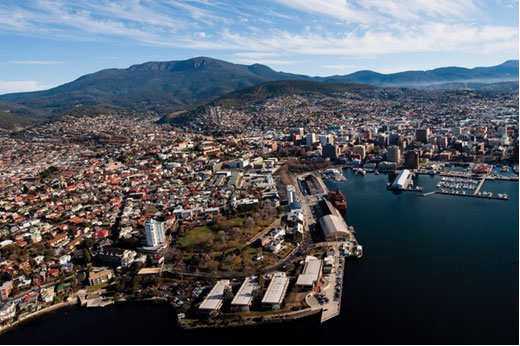
Program Status Update
Working in Tasmania
The two state nomination options available for skilled migrants through Tasmania are:
The Tasmanian State Nomination Skilled Migration Program supports Tasmanian businesses and increases the state’s working age population. It does this by attracting and retaining migrants with skills genuinely in need by employers, or with the capacity to settle in Tasmania through skilled employment in the long-term, and business activities that will increase employment opportunities.
Tasmania’s skilled migration program is for people wanting to move to the state who have skills that Tasmania need. Skilled migrants are attracted to Tasmania because of the state’s enviable lifestyle, career opportunities, affordable housing, reputable schools and a globally recognized university.
The Migration Tasmania Application Gateway is now available for registrations of interest (ROI) and applications for skilled visa nomination from Tasmania.
Anyone seeking Tasmanian nomination for a Subclass 190 Skilled Nominated Visa or Subclass 491 Skilled Work Regional Visa must first register in the Migration Tasmania Application Gateway .
Before submitting an ROI for Tasmania, applicants should check that they meet all eligibility requirements for either;
ROIs submitted before 1 July 2023 will remain valid for the 2023-24 program year.
ROIs and applications submitted from 5 July 2023 fall under the new eligibility requirements.
In cases where new requirements are likely to be beneficial, candidates may wish to withdraw their current ROI and submit a new one. (There is no charge to submit a Registration of Interest)
For a further explanation, see the Frequently Asked Questions page on the Tasmania Government website.
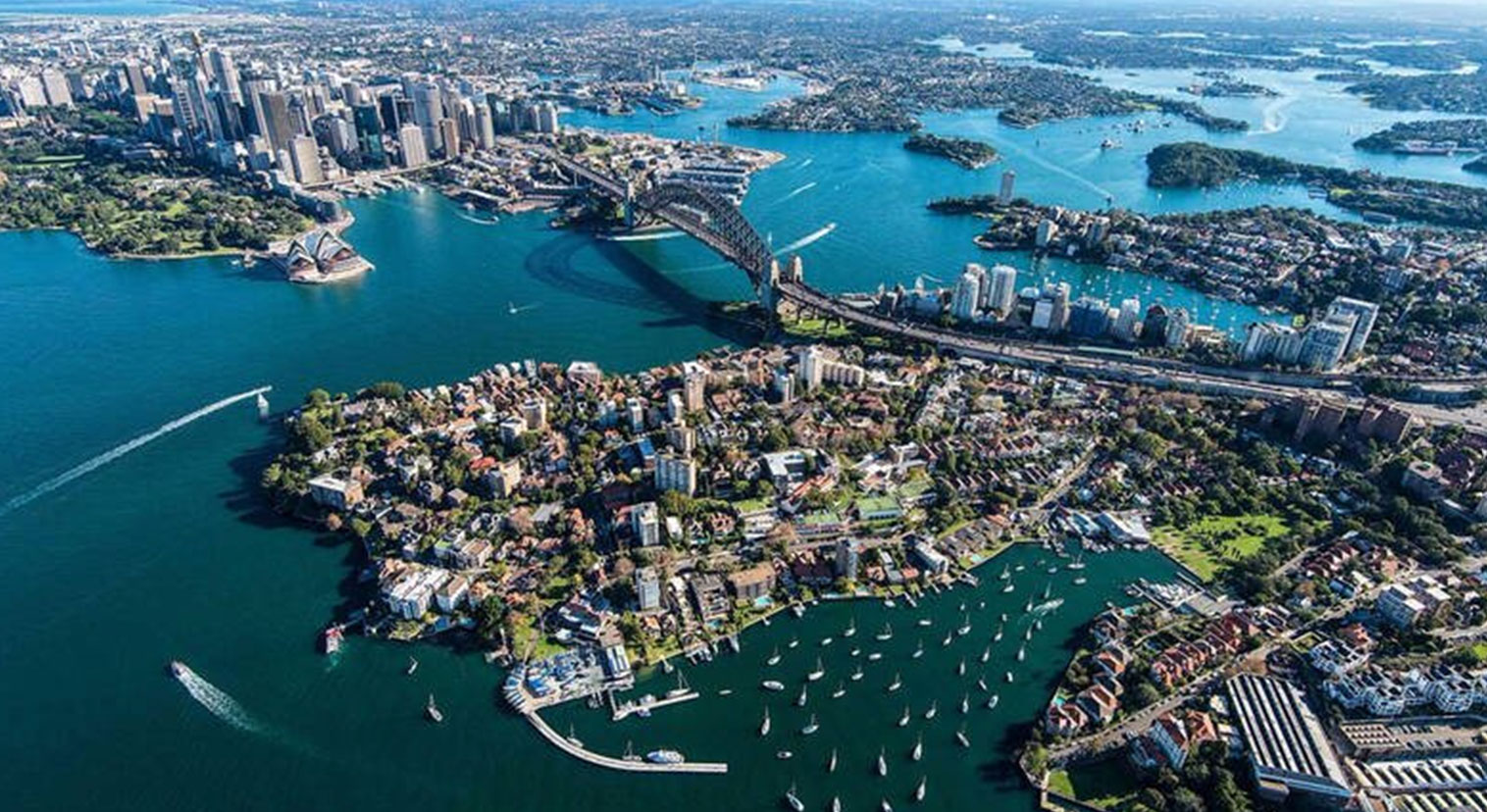
Program Status Update
The New South Wales government has invited applications from offshore migrants under the following nomination streams:
The NSW State Government announced that offshore applicants skilled in certain ANZSCO unit groups are still eligible for NSW nomination.
*Please note: Invitation rounds occur frequently throughout the financial year with no set date.
NSW invites and nominates Skill Select EOIs at the ANZSCO unit group level. To be eligible for NSW nomination (for either Subclass 190 or Subclass 491) you must be skilled in an occupation that both:
It is important to note that not all occupations within ANZSCO unit groups are eligible for the respective visa. It is the responsibility of the prospective migrant to ensure their occupation is eligible for the visa before obtaining a skills assessment.
For the 2022-23 financial year, NSW have introduced a new requirement regarding your Skill select EOI. To be eligible for NSW nomination, your Skillselect EOI must be for ONE visa and for NSW only.
This means that if your Skill select EOI has multiple visas and/or multiple states selected (this includes selecting ‘ANY’), your Skill select EOI will not be considered for NSW nomination.
The skills lists for 2022-23 are available on the Investment NSW website. Additional ANZSCO unit groups will not be added this financial year, however, the skills lists are reviewed annually.
Before submitting an EOI for New South Wales, applicants should check that they meet all eligibility requirements for either;
For a further explanation of how the skills list works, see the Common questions about skilled visas page on the NSW Government website.
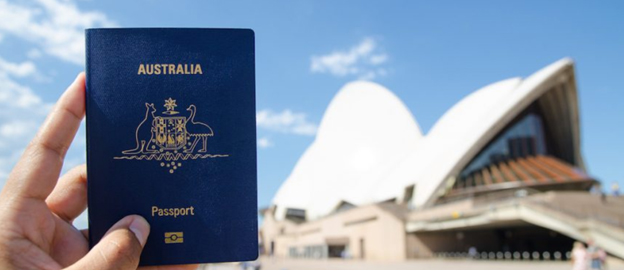
A shift to a simpler and more streamlined migration system with better pathways to permanency is a crucial step to securing Australia’s future prosperity, Business Council chief executive Jennifer Westacott said.
“We welcome the government’s agreement today that a working migration system is key to securing our economic future, building productivity and locking in higher living standards for Australians.
A fit for purpose migration system that cuts back on red tape puts Australia in the box seat to build new industries, tackle the transition and forge a path to being a frontier economy.
Adjustments to TSMIT are workable but do represent a significant increase. This change will need to be delivered alongside action to remove onerous and ineffective red tape while still ensuring Australian workers don’t miss out by targeting migrants with the scarce skills in short supply around the world.
TSMIT changes will need to be delivered with a process for essential workers to avoid unintended consequences in areas of real shortage but with incomes below the threshold.
Crucially, the government has recognised that Australia will be better served by a system that gives skilled migrants an opportunity to stay here, contribute and help us all build an even stronger and more dynamic Australian economy.
Migration has been integral to Australia’s economic and social success but over time our system has become a patchwork of rules that doesn’t attract the best and brightest or discourages migrants from staying, today’s announcement signals a reset.
By building better pathways to permanency for migrants the government is helping make us a more attractive destination for the highly skilled workers we need to build new industries and it’s creating a system that will serve our community better in the long term.
Jobs and Skills Australia will give the nation a renewed focus on identifying the right workers and business is ready to work with the agency to get the settings right.’’
“We’re building a strong pipeline of talent here in Australia.”
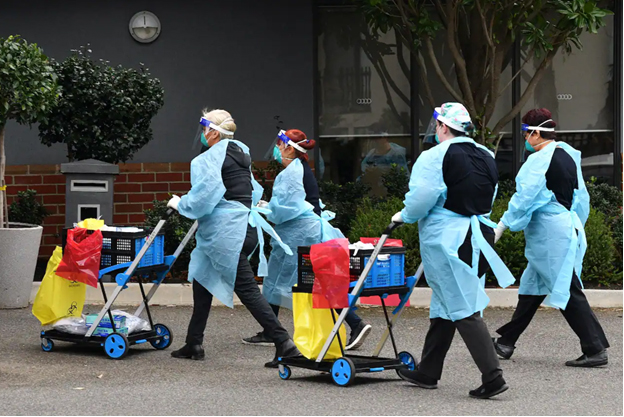
A consideration of how best to address workforce shortages in the health care sector will be a focus of the next public hearing of the Joint Standing Committee on Migration.
Committee Chair, Maria Vamvakinou MP, said ‘We will be speaking to a range of organisations involved in the provision of health care. Most have made submissions to the inquiry, and we will be exploring with them issues encompassing the attraction and retention of doctors, nurses and other skilled migrants in the sector; the inflexibility, cost and complexity of the existing visa system; and the particular challenges facing those providing health care in rural and remote communities.’
The committee will also consider opportunities to make better use of migrant skills, including those who arrive as humanitarian entrants. ‘We need to address the underutilisation of the skills of migrants who come to build their lives in our society, and particularly the ways in which they can be better supported to maximise their contribution to our nation’ Ms Vamvakinou remarked.
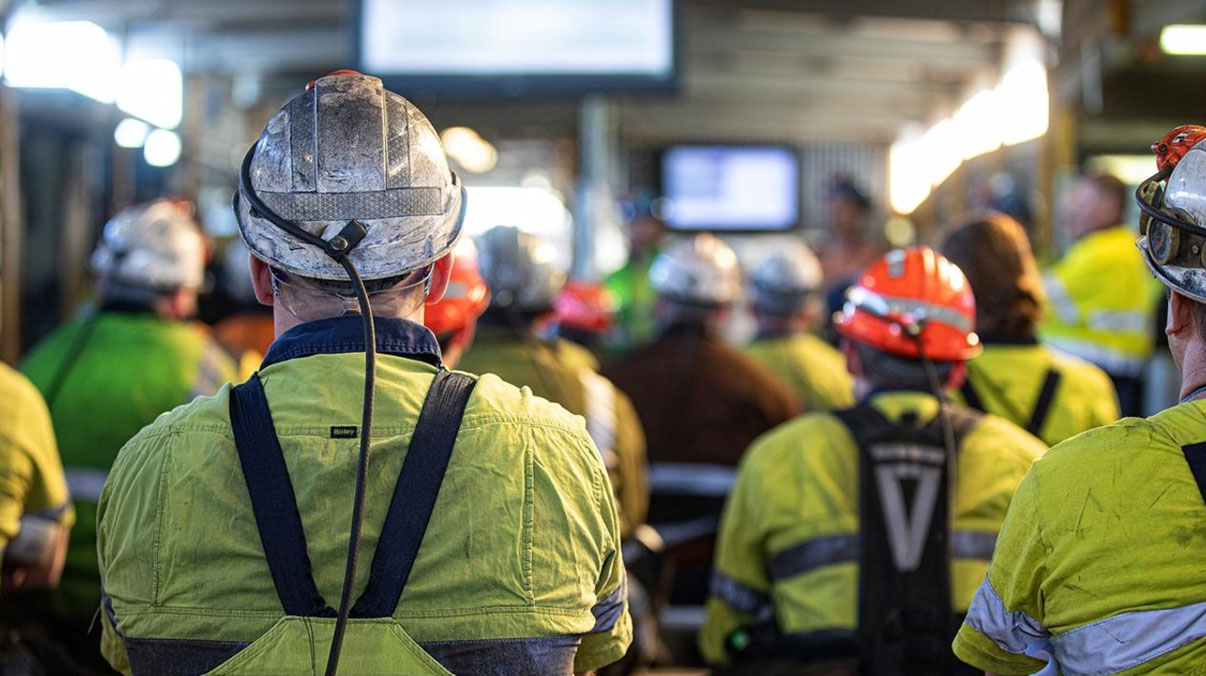
More than 50 Aussie jobs are on offer with pay packets of up to $150k as one industry struggles to get new workers.
More than 50 mining jobs are on offer in one struggling Australian region, with pay packets of up to $150,000 — and you never need to have touched a piece of coal.
The high-paying green skin and trainee roles, all based in Queensland’s Bowen Basin, cover all levels of experience, from newbie-friendly jobs to ones that require a trade certification.
They come as mining companies struggle to attract new talent due to the remoteness of most work and the perception of mining as a “dirty job that few want”, as per the Wall Street Journal.
In December, Perth-based mining company Mineral Resources was forced to look to New Zealand to fill jobs as construction supervisors and superintendents, because Aussies kept turning down the $300,000 roles.
Even companies that mine copper and lithium, metals that are considered essential to green energy production, say they can’t find enough young workers.
A global survey by consulting firm McKinsey found 70 per cent of its 15-30-year-old respondents definitely or probably wouldn’t work in mining. McKinsey also found, in Australia, the number of mining graduates fell by 63 per cent between 2014 and 2020
The Bowen Basin jobs are spread across a number of regional locations, including Bluff/Blackwater, Toowoomba and Biloela. Some even offer housing bonuses of up to $36,800, and most don’t need you to have worked in mining before — though transferable skills are always useful.
One such job is with Batchfire as an auto-electrician at the Callide Mine, 20km northeast of Biloela. The job, which pays between $147,000 and $150,000 per year plus super, requires “extensive experience in routine maintenance and fault finding on heavy earthmoving equipment”, a trade certification, a C-class driver‘s licence and the ability to pass a medical exam.
The residential position also means the employee can be home every night and enjoy six weeks of annual leave.
Batchfire is also hiring a temporary diesel fitter with a salary of up to $150,000 per year and many of the same benefits.
Some of the more entry-level-friendly roles include ones for trainee drivers, trainee mining operators and new-to-industry truck operators.
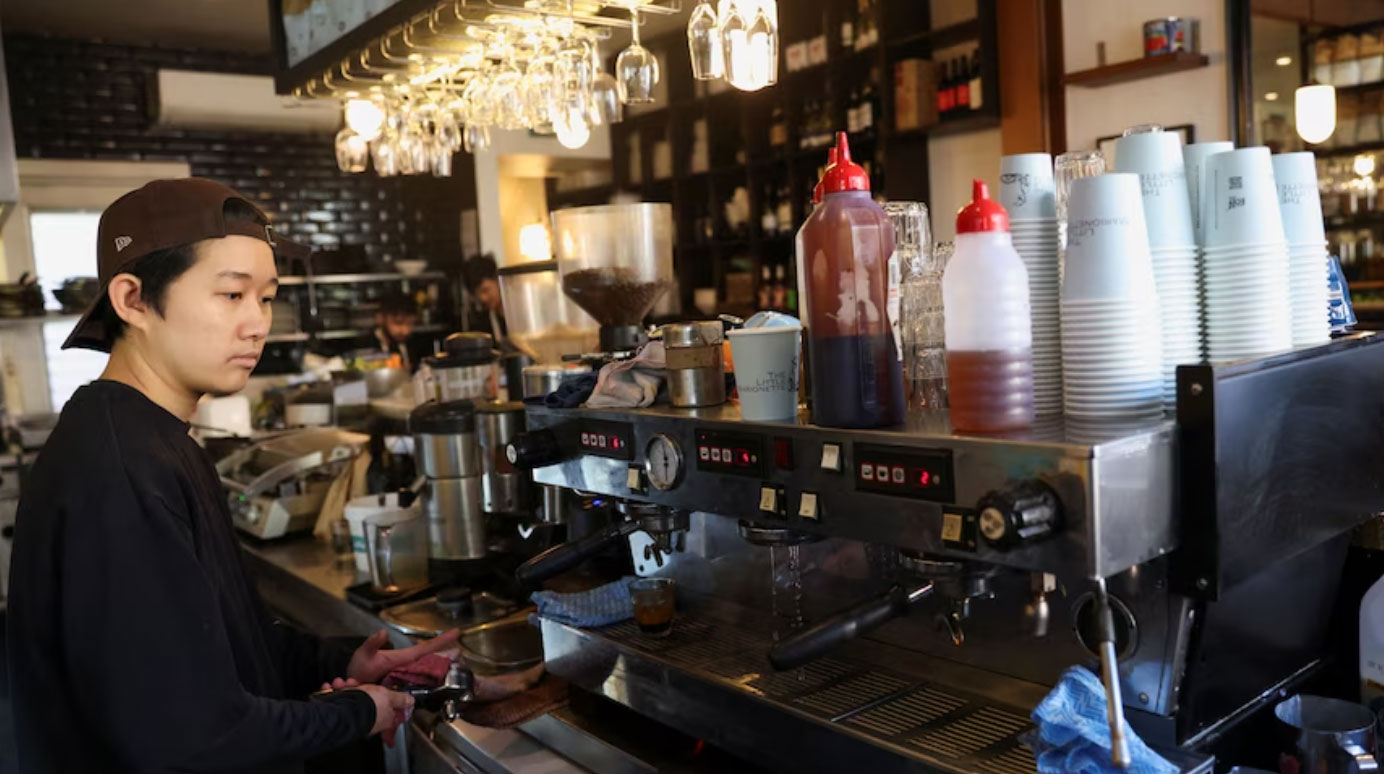
The Australian government hasn’t wholeheartedly and publicly committed itself to full employment since 1945.
Stand by for one of the most important decisions Treasurer Jim Chalmers and the Albanese government will make.
That decision is to commit future governments and the Reserve Bank to full employment and, more importantly, spell out what that means.
The Australian government hasn’t wholeheartedly and publicly committed itself to full employment since the 1945 Full Employment White Paper, released as World War II was drawing to a close and Australia was gearing up for peace.
The definition Chalmers chooses — whether it specifies an unemployment rate of 3.5 per cent, 4.5 per cent, or the more ambitious target of 3 per cent — could reverberate for as many decades as the white paper did in 1945.
Augusts Reserve Bank decision not to increase interest rates further makes it more likely we could end up with a more ambitious target.
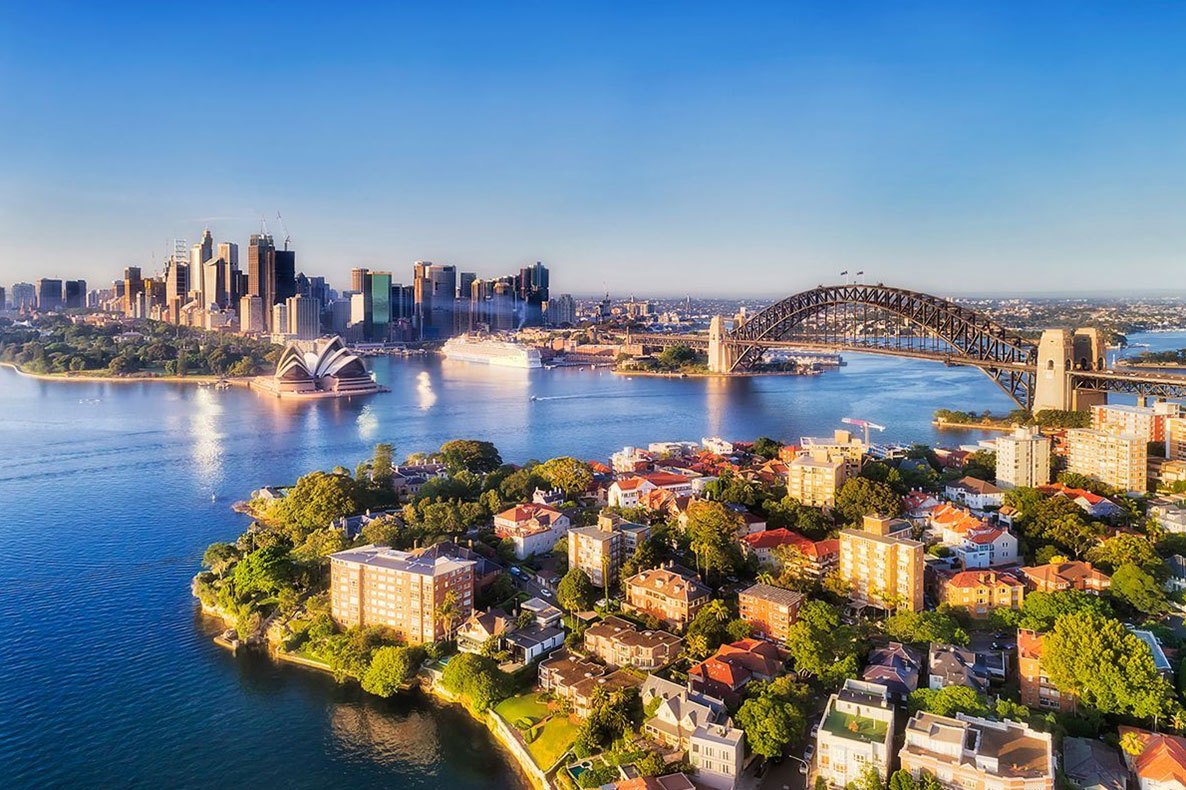
It takes more than a kangaroo to lure one to make the big step of moving to Australia. Rich in natural wonders, breathtaking beaches, cosmopolitan metropolises, and diverse wildlife, Australia makes a special place for anyone. Moreover, with high performance in many dimensions of well-being, such as income, jobs, education, and environmental quality, Australia has increased the life quality for its residents and the number of expats moving to the country every year.
A key part of moving to Australia is deciding the area you want to live— to help you find the right place to move in, here are some of the most popular places for expats to move to in Australia:
Adelaide
Moving to the south is always a great idea, especially if you choose to move to Adelaide. The city is a popular area for expats moving to Australia with their families. In Adelaide, you can enjoy a laid-back lifestyle. The excellent transport links make it easy to move around the city to get things done. In addition, the city itself provides excellent educational institutions and healthcare facilities, a great climate, and beautiful properties in and out of the city. Above all of the great things, Adelaide also offers many opportunities for work in various industries, giving you space to grow professionally and personally.
Melbourne
If you’re looking for a good place to work, study, or live, Melbourne will make an excellent choice. Melbourne is Australia’s most liveable city, thanks to the multiple public transport options, low crime rates, job opportunities, high-quality education, and many more. Accommodation will not be a problem for you because Melbourne offers a wide range of high-quality accommodation options for everyone, families, students, and couples.
One of the best things about living in Melbourne is that you will experience a touch of culture since the city is also known as Australia’s cultural capital. In the culturally diverse city, you will find from theatres and music festivals to street art and World Heritage Sites.
Brisbane
Brisbane is a metropolitan city famous for its river life, natural beauty, culture, and beautiful beaches. The city is an excellent alternative if you like living in Sydney and Melbourne but want a cheaper option.
Just like in other Australian cities, Brisbane also offers an excellent public transport system to make it easier for the residents to get around. Although you will see many skyscrapers around Brisbane, the city also offers many green spaces where you can enjoy the sunny weather of Australia and relax during the day or night.
Brisbane is also near the world’s first and largest koala sanctuary, so if you like wildlife and koalas, consider making Brisbane your future home.
Sydney
Being one of the most famous cities in Australia has made Sydney a center point for expatriates around the world, making it also the most populated city in Australia. This also means that you will be introduced to a diversity of people and cultures. In addition, Sydney is known for the job opportunities it offers and has an unemployment rate below the national average. Although the job market is a bit competitive, considering the corporates and many Australian organizations, jobs pay well.
Another perk of moving to Sydney is the stunning beaches, seal pools, and wonderful climate. You will also be entitled to excellent education facilities, high-quality healthcare, great infrastructure, and affordable public transport.
However, you should keep in mind that Sydney is one of the most expensive cities in Australia.
Canberra
Canberra is one of Australia’s safest cities and has the highest average income, level of education, and lowest unemployment rate in Australia. Add to that the affordable living costs compared to other cities like Melbourne. In Canberra, you will have a high standard of living for a lower living cost.
Canberra is perfect for families and students, as it has plenty of on-campus accommodation and is an academic city.
As in other Australian cities, you will get around easily in Canberra, whether that is by bike, car, or public transport. Another benefit of living in Canberra is that there is relatively little traffic, and the city has an exceptional light rail system.

Constantly refreshing through your email inbox. Logging into your Immi Account non-stop. These are the telltale signs of someone anxiously awaiting a visa – and trust us, we totally get it. Fortunately, the Department of Home Affairs has shared some good news: the processing times for many visa subclasses have now been reduced!
In a LinkedIn post published by the Department on 3 August 2023, it revealed that processing times had improved for study, work and holiday visas, including:
According to the post, the below average Australian visa processing times are now:
The processing times for certain permanent visas have also improved; namely, 90 per cent of Skilled Nominated (subclass 190) visa applications are processed within seven months.
The news comes a year after the Department was reported to be experiencing significant delays in processing visa applications due largely to high volume.
It’s important to note that, while the general processing times have improved for various visa subclasses, there is no guarantee that your visa will be approved in this time frame. You can improve your chances of having your visa processed promptly by ensuring you submit a complete application with all the required documentation.

Picking up a part-time or casual job isn’t just a great way to earn some extra money while you’re studying! Working throughout your degree also allows you to develop valuable skills and experience to boost your resume. It might also help you land the perfect role after graduation.
However, it can be challenging to navigate the working world, especially in a new country. To help you get started, we’ve put together the ultimate guide to finding jobs for international students in Sydney.
International student working rights
Before you start your student job search, it’s important to understand your rights and obligations when working on a subclass 500 Student visa.
From July 2023, the government has reinstated the working hour cap for international students. This means you can now work up to 48 hours per fortnight in a part-time or casual job during study periods, and unlimited hours over your holiday breaks.
You’ll also need to maintain your course enrolment, attendance and grades in line with your visa conditions.
As an international student, you’re entitled to the same workplace protections as any other employee in Australia. Make sure you do your research and understand your rights at work to ensure you’re being treated fairly.
Popular jobs for students
So, you know all of your rights and you’re ready to land your first job. But what role should you choose?
Luckily, there are plenty of great part-time jobs in Sydney for international students. With lots of interesting roles in a wide range of industries, you’ll be sure to find your perfect fit!
Jobs in retail and hospitality are particularly popular with students. These roles offer a lot of flexibility in terms of shift times and hours per week, which makes them easy to fit around study and other life commitments.
Other industries that have lots of student jobs in Sydney include health care, business and administrative services.
Some roles in these industries you might want to explore include:
How to find a job in Sydney for international students
So, how do you find student jobs near you?
Thanks to the internet, discovering and applying for vacancies is quick and easy. There are lots of job websites you can visit to begin your student job search, including:
As an international student in Sydney, you can also access NSW Jobs Connect for International Students, which is delivered by Study NSW and SEEK. This initiative connects you with employers who have expressed interest in hiring international students. To access NSW Jobs Connect, you just need to head to SEEK and search for the hashtag #NSWJobsConnect.
Additionally, check with your education provider. Many institutions have their own job boards that you can access to find great roles.
For example, students at the University of Sydney (USYD) have exclusive access to the Sydney CareerHub jobs database. With 30,000 positions advertised each year, this database is the perfect place to find your next part-time, casual or vacation job. It’s also an excellent resource for internships and graduate roles!
Make use of resources
If landing a student job in Sydney still seems overwhelming, the best thing to do is reach out for support. Thankfully, there are lots of ways to access help, as well as resources to improve your employability and secure the perfect role.
Networking is a fantastic way to uncover new opportunities that you might not even know about. Try asking your friends, peers and lecturers if they know of any roles that might suit you. Or, visit a careers fair to speak to employers directly and build your professional network.
Additionally, check with your institution to see what assistance is on offer.
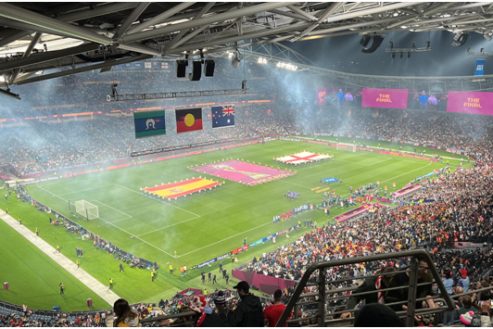
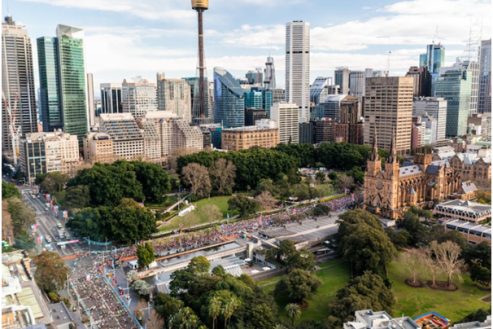
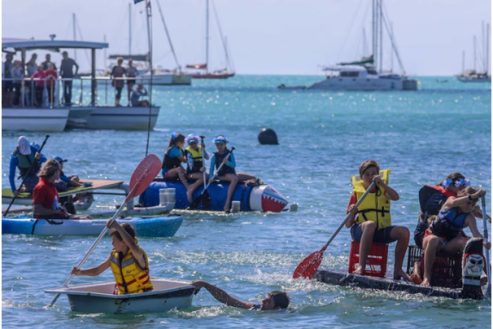
The ‘Great Barrier Reef Festival’ was a 4-day long incredible combination of family fun, reef focused environmental and art initiatives, destination events, local food and culture and some of the biggest beach parties in the tropical north! Airlie Beach, Queensland. August 2023
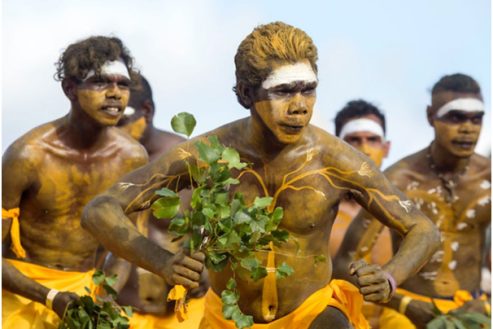
In the remote north of Australia the Yolngu clans of Arnhem Land come together for a four-day celebration of art, music, dance, ceremony and song– at the ‘Garma Festival’. Nhulunbuy, Northern Territory. August 2023

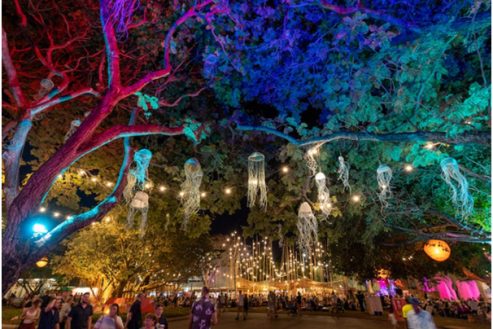


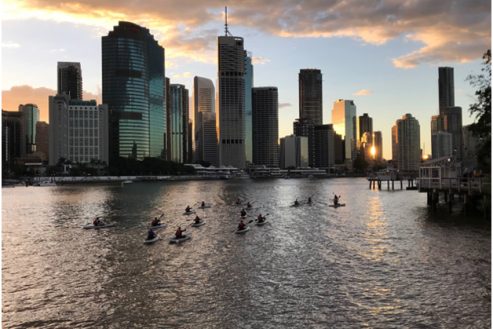

An afternoon hit of golf with some kangaroo spectators. NSW. August 2023
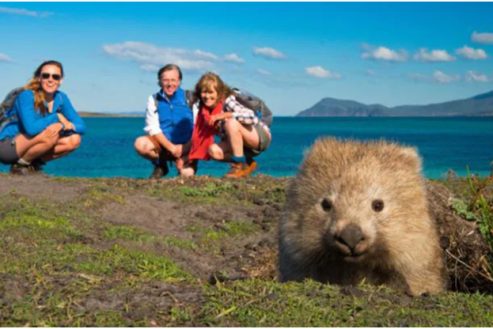
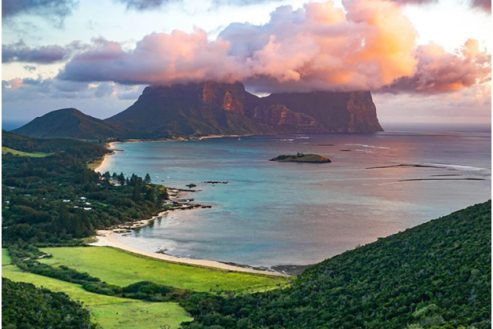
This Bulletin and its contents is for general information purposes only and should not be used as a substitute for consultation with professional advisors.
As legislation and travel requirements are constantly changing, we strongly recommend obtaining advice on your individual situation from a Registered Migration Agent. Please click here to book a consultation with one of our Registered Australian Migration Agents, located in Australia.






You can manage your membership and billing method by clicking here
Terms of Service
Privacy Policy
Copyright © 2025 Office of Immigration Australia, a private company registered in Australia. All Rights Reserved.